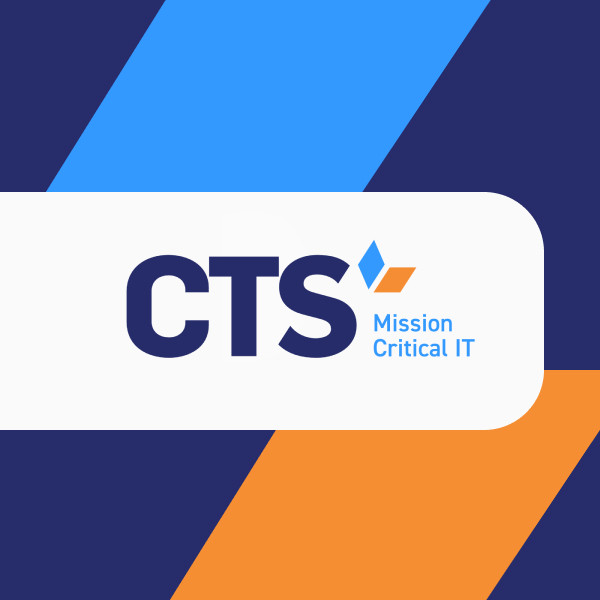Managed IT Services Pricing - a Guide from a Trusted Hartford IT Firm
Hartford, United States - October 16, 2025 / CTS /
IT Company in Hartford Shares Smart Strategies for Managed IT Services Pricing
Keeping technology costs under control is difficult when your business faces rising compliance and cyber risks, and growing IT needs. Many organizations struggle to forecast their IT budgets, making long-term planning more challenging.
IT system expenditures are projected to top $5.6 trillion across the globe in 2025. Businesses are pumping a lot of money into technology, and they expect to get results.
“Businesses want predictable IT costs that also deliver measurable value,” said Sachin Gujral, Founder & CEO of CTS. “When pricing aligns with strategy, companies gain control and stability.”
This blog a reliable IT company in Hartford will walk you through the key factors that drive managed IT services pricing, what services are included, how different pricing models work, and why a structured approach delivers more value over time.
What Drives Managed IT Services Pricing
The cost for outsourcing IT services is shaped by a variety of business-specific factors. You need to understand these drivers to assess whether a provider’s rates match your needs, which we discuss below:
1. Number of Users and Devices
Most providers charge per user or per device. The more employees and hardware you support, the higher the cost. Per-user pricing covers all devices used by one employee, while per-device pricing bills for each piece of equipment. Choose based on how your staff work.
2. Scope of Services
Basic support, like troubleshooting and patching, is more affordable. Costs rise when your provider manages compliance, cybersecurity, or full IT roadmaps. These services add long-term stability and reduce risk.
3. Cybersecurity Requirements
Adding protections such as 24/7 monitoring, user training, and policy updates increases cost but lowers risk. Prevention is far cheaper than recovery! According to Sophos’ 2024 report, the average ransom payment skyrocketed from $400,000 to $2 million in a single year.
4. Service Level Agreements (SLAs)
SLAs define response times and service scope. Faster support and guaranteed resolution often cost more but help avoid expensive downtime. Always compare SLA terms before committing.
5. Data and Storage Needs
More data means higher costs for storage, backup, and recovery. Cloud hosting and replication add to monthly fees, especially when sensitive data requires advanced security.
6. Onboarding and Transition Support
Switching to a new provider involves setup, documentation, and tool deployment. Some include onboarding in base pricing; others charge separately. Clarify this before signing a contract.
All these factors combine to shape the final cost. Once you understand them, you can evaluate whether your provider is pricing fairly and transparently.
What Is Included in Managed IT Services Rates
Knowing what you get in return for your investment helps you judge if a provider is offering real value. Standard managed IT costs should cover core services that keep your systems secure and efficient. These include:
- 24/7 Support & Monitoring: Expect round-the-clock helpdesk access, network monitoring, and proactive maintenance. Quick issue detection keeps operations on track.
- Compliance Support: If your business is regulated, providers should assist with audits, policy updates, and aligning systems to industry standards.
- Backup & Recovery: Reliable backups and disaster recovery plans protect against data loss from cyberattacks, accidents, or system failures.
- Cloud Management: Providers should actively manage cloud resources, user access, and uptime to ensure security and cost-efficiency.
Managed IT Services Price List Example
When reviewing your managed IT services price list, check for these items:
- Ticket response times, including devices or users
- Cybersecurity coverage
- Backup frequency
- Compliance support.
If your provider doesn’t include these items in their pricing, this could be a red flag. Before agreeing to work with a provider, make sure the above items are included in the SOW and the extent of what they include is clear.
Managed IT Pricing Models Explained
Every business has unique needs, so MSPs offer different models to fit budgets and workflows. In general, the most common types of pricing models you’ll encounter are:
- Per-User Pricing: Flat monthly fee per employee. Covers all the employees’ devices and simplifies budgeting.
- Per-Device Pricing: Charges per desktop, laptop, server, or mobile. Good for shared setups, but costs rise with more hardware.
- Tiered Pricing: Choose from basic to advanced service levels. Easy to scale as your needs grow.
- Flat-rate Pricing: Unlimited support for a fixed fee. Great for predictable budgets and frequent IT issues.
- À La Carte Pricing: Pay only for what you use. Flexible, but it can get complex as your business expands.
How Much Does Managed IT Services Cost
So, how much do managed IT services cost in practice? Rates vary, but some averages can guide your planning.
According to CloudSecureTech, per-user pricing often ranges from $110 to $400 per user monthly.
Per-device models typically run from $50 per device for desktops to several hundred for servers. Flat rate plans can cost $3,000 to $7,000 monthly for mid-sized organizations.
Example scenarios:
- A small business with 20 employees may pay $3,000-$4,000 per month.
- A mid-sized company with compliance requirements may pay closer to $10,000 per month.
- A nonprofit with remote teams may pay more for data protection and secure cloud services.
A managed IT services calculator can give a rough estimate, but always ask for a detailed proposal. Compare short-term affordability against long-term value, since cutting costs early often creates larger expenses later.
Why A Managed IT Services ROI Calculator Matters
Looking at cost alone doesn’t tell the full story. To know if managed IT is worth the investment, you need to measure return on investment (ROI). An ROI calculator helps you compare what you spend with the value you gain.
- Cost Savings from Outsourcing vs. Hiring Internally: Running an internal IT team means paying for salaries, benefits, and ongoing training. Managed services give you access to a full team of experts at a fraction of the cost.
- Reduced Downtime and Faster Issue Resolution: Downtime is expensive. Gartner estimates it costs $5,600 per minute. Managed services resolve issues faster, which helps avoid major losses.
- Lower Cyber Insurance Premiums: Strong IT policies and security practices often lead to lower premiums. CTS clients save 30% on average.
Real-World ROI Breakdown
Let’s say your company pays $5,000 per month for managed IT services. Here’s how that investment can pay off:
- Downtime Reduction: Before managed services, you experienced 3 hours of downtime per month. That’s 180 minutes × $427 = $76,860 in monthly losses. With managed services, downtime drops by 85%, saving $65,331 per month.
- Cyber Insurance Savings: Your annual premium was $30,000. After onboarding, it drops by 30%, saving $9,000 annually or $750 monthly.
- In-House Staffing Costs Avoided: Hiring two IT staff would cost around $150,000 per year. With managed services, you avoid that expense entirely.
Total Monthly Value Gained:
- Downtime savings: $65,331
- Insurance savings: $750
- Staffing savings (monthly equivalent): $12,500
- Total: $78,581
Monthly Managed Services Cost:
- $5,000
Net ROI:
- $78,581 value – $5,000 cost = $73,581 in net benefit per month
This type of ROI shows that managed IT isn’t just a cost; it’s a strategic investment that protects your business and boosts performance. Without measuring ROI, you risk viewing IT as a necessary expense instead of a growth driver.
Ways Managed IT Services Reduce Long-Term IT Costs
Beyond monthly rates, outsourcing IT creates measurable savings over time.
- Fewer Surprise Costs: Predictable pricing helps avoid emergency repair bills and downtime losses.
- Better System Efficiency: Providers fine-tune your tech to reduce waste and maximize performance.
- Time-Saving Automation: Automated updates and backups free your team from manual tasks.
- Compliance Protection: Ongoing monitoring and documentation help you avoid costly fines.
- Proactive Risk Management. Early issue detection keeps IT costs stable and prevents financial shocks.
These savings accumulate over time and often outweigh the initial investment.
Key Considerations When Reviewing Managed IT Services Price List
Comparing providers can be confusing. A careful review of their pricing documents helps avoid mistakes.
- Transparent Pricing: Beware of vague contracts or unclear service details. Hidden fees are common with low-cost providers.
- Cheaper Isn’t Always Better: Lower monthly rates may exclude essentials like 24/7 support or compliance. Fixing those gaps later often costs more.
- Compliance & Security Coverage: If you’re in a regulated industry, make sure pricing includes audits, reporting, and policy management. These are critical for avoiding fines and staying protected.
Questions to ask when comparing providers:
- What is covered in your flat rate?
- How do you handle onboarding?
- What is your average resolution time?
- Do you provide quarterly reviews and reporting
- How often is our organization monitored?
Comparing Managed IT Pricing Across Industries
Pricing models do not affect every industry equally. Some sectors face higher costs due to compliance or data requirements. This table shows how costs vary and what drives them.
Before reviewing it, consider whether your sector demands specialized oversight or documentation, since that often increases IT spend.
| Industry | Average Cost Driver | Typical Monthly Range | Key Considerations |
| Healthcare | Compliance and patient data | $6,000 – $12,000 | HIPAA, high storage needs, strict monitoring |
| Finance | Security and regulatory oversight | $6,000 – $15,000 | PCI-DSS, audits, and advanced cybersecurity |
| Nonprofit | Data protection and limited budgets | $4,000 – $6,000 | Grant compliance, donor data security |
| Manufacturing | Devices and remote systems | $5,000 – $10,000 | IoT, plant system uptime, industrial networks |
| Professional Services | User and device management | $3,000 – $7,000 | Client confidentiality, cloud collaboration |
| Education (Schools) | Device volume, student data privacy, e-learning platforms | $2,500 – $6,000 | High device count, FERPA compliance, cloud-based learning tools |
Gain Measurable IT Value with a Trusted IT Firm in Hartford
Pricing should not be a mystery. In this blog, we covered what drives cost, what is included in managed IT services pricing, common models, and how ROI proves value. We also explained why proactive IT saves more than it costs.
CTS has over 15 years of experience and supports more than 8,300 end users with a 75% first-touch resolution rate. This proven track record ensures your IT strategy is backed by measurable performance.
If you want predictable IT budgets with expert-led support, contact CTS today to schedule a consultation and learn how we can help.
Let’s connect. Book your free consultation with a trusted Hartford IT company today and start turning your IT into a competitive advantage.

Contact Information:
CTS
750 Main St #100
Hartford, CT 06103
United States
Sachin Gujral
(860) 200-2286
https://charterts.com/


